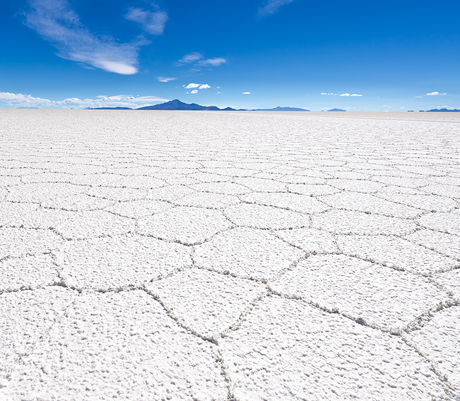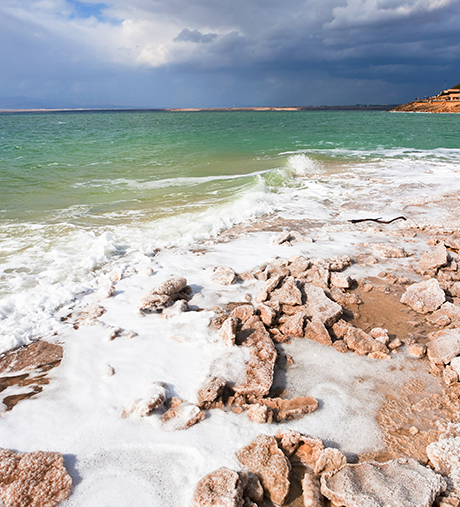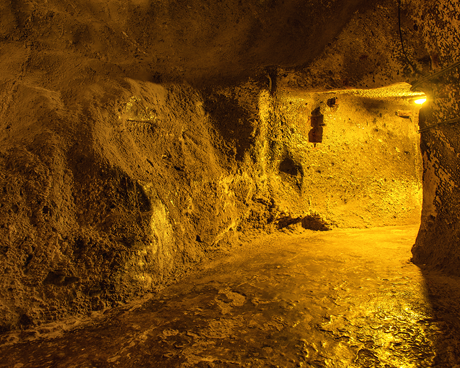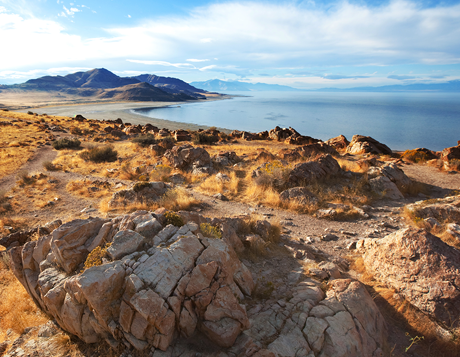Salt Guide
Uyuni Salt Flats of Bolivia
-
Located in the southwestern part of Bolivia, the Uyuni Salt Flats was formed into a huge lake as the sea began to melt after the ice age 20,000 years ago. It was formed as the evaporation of water in a dry climate left only salt crystals.
The amount of salt in the Uyuni Salt Flat is so large that it can be used by Bolivians for thousands of years. And with its high purity, it can be washed and used immediately. The Uyuni Salt Flat is called the largest mirror in the world, because during the rainy season, the rain on the flat reflects the sky to make it seem like a mirror. Many tourists come to see this optical illusion every year.
The Uyuni desert is dry, but the altitude high that the average temperature is around 21°C even in summer. The surreal landscape created by the vast desert of salt with about 10 billion tons of salt, the mirror-like lake, and the blue sky, impress the travelers. 
Dead Sea

-
The Dead Sea is a lake in the middle of the desert of the northwestern Arabian Peninsula. The temperature of the Dead Sea is high all year round, with little change. About 5 million tons of water comes in from the Jordan River and there is no outlet for the water. However, as the temperature is high, the same amount of water evaporates, and this keeps the water level constant without overflowing.
The salt content per liter of Mediterranean seawater is 37 grams, but the salt content of the Dead Sea water is 275 grams. The reason behind this high salt content in the Dead Sea is heat. As the temperature is maintained at 25 to 40 degrees year-round, much of the water evaporates, but inorganic salts continue to accumulate. In addition, unlike ordinary lakes, where water flows out to other places, the Dead Sea does not flow elsewhere, so it has a high salt content.
The salt in the Dead Sea is known to be effective for skin care and rheumarthritis, so thousands of tourists come for a mud bath. The Dead Sea allowed Israel and Jordan to become the world's eight largest producers of potassium hydroxide. However, its sea level has recently been decreasing causing a concern. When the sea level becomes low, it affects the surrounding land and this can be a serious problem in a region like this suffering from water shortages.
Wieliczka Salt Mine
-
This rock salt mine located about 15 km from Kraków, Poland, was designated as a World Heritage Site by UNESCO in 1978. Although it was the most important source of income for the Polish kingdom for 700 years, its significance as a salt mine faded as salt mining gradually decreased. However, the unique landscape created by the years and the laborers’ sweat and passion made the inside of the mine a tourist resource that attracts 800,000 tourists annually.
Mine workers used the remaining space after mining as chapels, playgrounds, and commemoration spaces for celebrities, leaving numerous sculptures with salt inside. As the healing effects of rock salt became widespread, a sanatorium for respiratory disease patients was established 211 m underground in 1964. And there is also a salt museum where you can view the history of the mine and mining, the map of the mine, and mining tools and machinery. 
Salt Lake City, Utah

-
It is the capital and the largest city of Utah, USA. The name Salt Lake City came from the salt lake named Great Salt Lake located in the northwestern part of the city. The salinity of the Great Salt Lake in the inland basin of Utah is around 25%, which is among the world's highest. This is because there is an incoming water from river but no river to flow out to.
Due to its high salinity, fish other than brine shrimp cannot survive. The width ranges from 2,460 ㎢ to 8,500 ㎢, and considering that the size of Seoul is 605.25㎢, you can realize how large the Great Salt Lake is.
The lake is also known for its beautiful scenery of the minerals in the water reflecting the glow of the setting sun.





